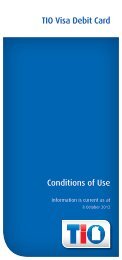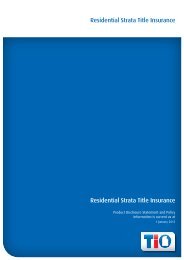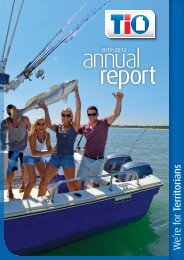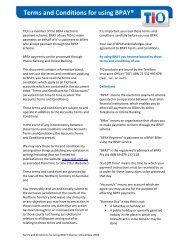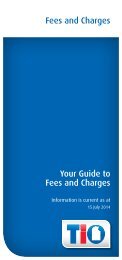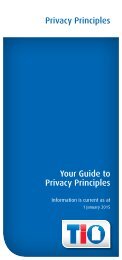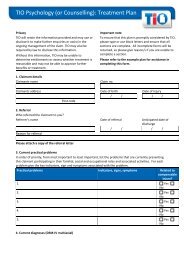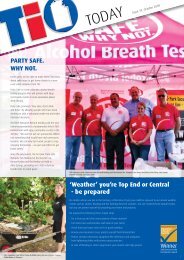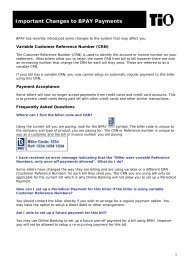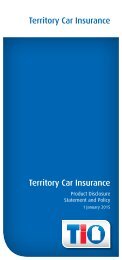Annual Report 2011 - TIO
Annual Report 2011 - TIO
Annual Report 2011 - TIO
Create successful ePaper yourself
Turn your PDF publications into a flip-book with our unique Google optimized e-Paper software.
Territory Insurance OfficeNotes to the Financial Statements30 June <strong>2011</strong>The pattern of recognition of income over the policy or indemnity periods is inaccordance with the pattern of the incidence of risk expected under the insurancecontracts. In most cases, time approximates the pattern of risks underwritten.Unearned premium liability, which is the proportion of premium received orreceivable not earned in the statement of comprehensive income, is determined byapportioning the premiums written in the year over the periods of indemnity fromthe attachment of risk, and is treated as a liability on the statement of financialposition at the reporting date.Reinsurance and other recoveries receivableReinsurance and other recoveries receivable on paid claims, reported claims not yetpaid, claims incurred but not reported and unexpired risk liabilities are recognisedas revenue.Recoveries receivable are assessed in a manner similar to the assessment ofoutstanding claims. Recoveries receivable in relation to "long-tail" classes aremeasured as the present value of the expected future receipts, calculated on thesame basis as the provision for outstanding claims. The details of discount andinflation rates applied are included in note 3.Interest, fees and commissionInterest income is recognised on an accrual basis. Banking related fees andcommissions are brought to account on an accrual basis whilst loan establishmentfees are brought to account over the estimated average life of the loan on aneffective interest rate basis.Rental revenueRental revenue is recognised as income on a straight line basis over the term of thelease. Lease incentives granted are recognised as an integral part of the total rentalincome.b) Unexpired risk liabilityThe adequacy of the unearned premium liability is assessed by considering currentestimates of all expected future cash flows relating to future claims covered bycurrent insurance contracts. This assessment is referred to as the liability adequacytest and is performed separately for each group of the contracts subject to broadlysimilar risks and managed together in a single portfolio.If the unearned premium liability less related intangible assets and related deferredacquisition costs is exceeded by the present value of the expected future cash flowsrelating to future claims plus the additional risk margin to reflect the inherentuncertainty in the central estimate, then the unearned premium liability is deemedto be deficient. <strong>TIO</strong> applies a risk margin to achieve the same probability ofsufficiency for future claims as is achieved on the outstanding claims liability.The entire deficiency, gross and net of reinsurance is recognised immediately in thestatement of comprehensive income. The deficiency is recognised first by writingdown any related intangible assets and then related deferred acquisition costs, withany excess being recorded in the statement of financial position as an unexpiredrisk liability.<strong>TIO</strong> <strong>Annual</strong> <strong>Report</strong> 2010/<strong>2011</strong> 45



